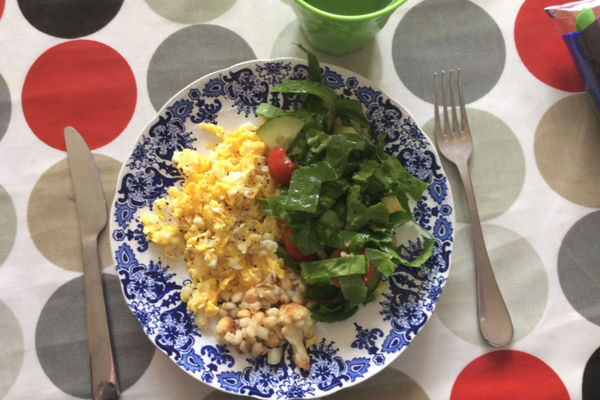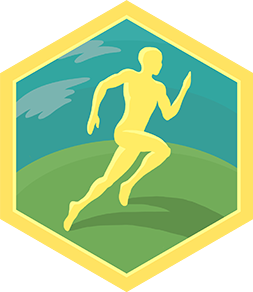Cook an athletic diet
Prepare simple athletic meals and snacks like smoothies, overnight oats, and balanced plates while learning nutrition basics and cooking safely with adult supervision.



Step-by-step guide to prepare simple athletic meals and snacks
Sports Nutrition & Hydration for Youth Athletes
Step 1
Gather all the materials and ingredients on the counter so everything is ready to use.
Step 2
Wash your hands and wipe the counter to make your work area clean.
Step 3
Put on an apron and tell an adult you need help with cutting or hot things.
Step 4
Pick one smoothie flavor one overnight oats flavor and one balanced plate idea to make.
Step 5
Measure and place the fruits for your smoothie into the blender cup.
Step 6
Add milk and yogurt or a scoop of protein or a spoon of nut butter into the blender with the fruit.
Step 7
Put the blender lid on and have an adult blend until the smoothie is smooth.
Step 8
Pour the smoothie into a cup and set it aside or put a lid on it if you plan to take it later.
Step 9
Measure rolled oats and milk into a mason jar or container for overnight oats.
Step 10
Stir in a spoonful of yogurt and a sprinkle of chia seeds or a swirl of nut butter then seal the jar and put it in the fridge.
Step 11
Place a serving of whole grains on one side of the plate.
Step 12
Add a cooked serving of protein to another part of the plate after an adult cooks or warms it.
Step 13
Fill the remaining plate space with colorful vegetables and fruit for half the plate.
Step 14
Share photos and a short description of your finished meals and snacks on DIY.org.
Final steps
You're almost there! Complete all the steps, bring your creation to life, post it, and conquer the challenge!


Help!?
What can we use if we don't have a blender or chia seeds?
Instead of a blender for the step to "measure and place the fruits for your smoothie into the blender cup," mash soft fruits with a fork or put fruit and yogurt/milk in a sealed jar and shake, and swap chia seeds in the overnight oats step for ground flaxseed or an extra spoonful of oats.
My smoothie isn't getting smooth and the blender lid leaks—what should I check?
Check that you added the liquids when you "add milk and yogurt," tighten the blender lid fully before the adult blends, blend in short pulses and scrape down the sides if chunks remain, and hold the lid while an adult blends to stop leaks.
How can I adapt this cooking activity for different age groups?
Preschoolers can do simple tasks like "wash your hands," wipe the counter, pick flavors, and stir the oats; elementary kids can measure ingredients and assemble the smoothie jar with adult help for the blending step; teens can cook or warm the protein for the balanced plate and post the photos on DIY.org.
How can we extend or personalize the meal after following the steps?
After you "pick one smoothie flavor, one overnight oats flavor and one balanced plate idea," personalize by creating a kid-designed menu, testing different toppings like toasted nuts or granola on the oats, timing prep to beat your best time, and making recipe cards plus photos to share on DIY.org.
Watch videos on how to prepare simple athletic meals and snacks
Sports Nutrition and Diet Tips for Young Athletes
Facts about sports nutrition and healthy cooking for kids
🥗 A balanced athletic plate mixes carbohydrates for fuel, protein for repair, and healthy fats for brain and recovery support.
🔪 Cook safely with an adult: wash hands for 20 seconds, use safe knife techniques, and keep hot surfaces supervised.
💧 Even mild dehydration (about 1–2% body weight) can make kids feel tired and slow down athletic performance.
🥣 Oats are a whole grain rich in beta‑glucan fiber that helps keep kids full and gives steady energy for play and sports.
🥤 Smoothies can pack fruits, veggies, and protein into one cup — add yogurt or milk to boost protein for muscle recovery.
How do I teach my child to prepare simple athletic meals like smoothies, overnight oats, and balanced plates?
What materials and ingredients do I need to cook simple athletic meals and snacks with my child?
What ages are suitable for children to participate in preparing athletic meals and snacks?
What are the benefits and safety tips for kids learning to make athletic meals and snacks?


One subscription, many ways to play and learn.
Only $6.99 after trial. No credit card required



